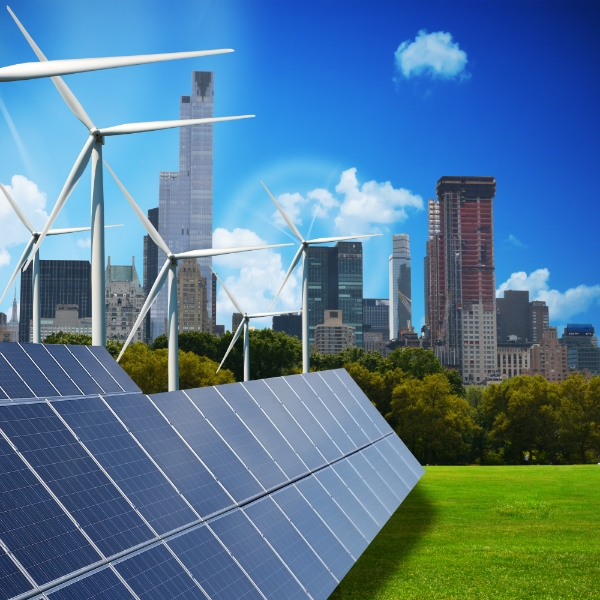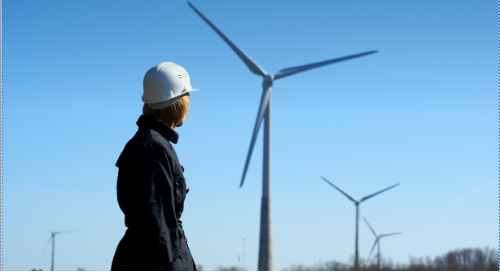supporting-world-engineering-day-for-sustainable-development
March 03, 2022
Build Back Wiser: Engineering the Future #WorldEngineeringDay
In support of World Engineering Day for Sustainable Development check out Wiley’s latest Engineering titles in sustainability covering renewable energies, sustainable construction, green building design and smart urban spaces.
Sustainable Construction: Green Building Design and Delivery, 5th Edition
A rigorous overview of the design, construction, and operation of high-performance green buildings. This leading textbook on sustainable building provides thoroughly updated information on everything from materials selection to building systems.
Updated to reflect the latest building codes and standards, including LEED v4.1, the book offers readers coverage of international green building codes and standards, biomimicry, ecological design, focused assessment systems like SITES, EDGE, WELL, and Fitwell, and sustainable construction resilience.
Advances in Energy Storage: Latest Developments from R&D to the Market
An accessible reference describing the newest advancements in energy storage technologies. This is a comprehensive exploration of a wide range of energy storage technologies that use the fundamental energy conversion method. Written by accomplished leaders in the field this book addresses electrochemical, chemical, thermal, mechanical, and superconducting magnetic energy storage, offering insightful treatments of relevant policy instruments and likely future advancements that will support and stimulate energy storage.
Step-by-Step Design of Large-Scale Photovoltaic Power Plants
How to design a solar power plant, from start to finish
A team of distinguished engineers delivers a comprehensive reference on PV power plants—and their design—for specialists, experts, and academics. Written in three parts, the book covers the detailed theoretical knowledge required to properly design a PV power plant. It goes on to explore the step-by-step requirements for creating a real-world PV power plant, including parts and components design, mathematical formulations and calculations, analyses, evaluations, and planning.
Building Information Modeling for a Smart and Sustainable Urban Space
Urban spaces are being called upon to develop a capacity for resilience and sustainability in order to meet the major challenges they face. To achieve such a goal, a practical development framework must be implemented in order to take advantage of the technological innovations that characterize the field of construction and urban engineering. Today, multi-scale BIM is bringing about significant changes that are redefining the paradigms of urban management. It facilitates simulations of the sustainability of urban spaces with respect to several criteria; most notably relating to energy, the economy and the environment.
Electricity Production from Renewable Energies, 2nd Edition
Since the early 2000s, energy and environmental issues have led to a marked increase in electricity production from renewable energy sources. Sustainable development and concern for future generations constantly challenge us to develop new technologies for energy production, as well as new energy usage patterns. Their rapid emergence can make these new technologies difficult to understand and can thus affect perceptions.
Directed towards a broad audience, this book contributes to a better understanding of new electricity generation technologies. It presents the issues, sources and means of conversion using a general approach, while developing scientific concepts to understand their main technical characteristics.
Wind Energy Handbook, 3rd Edition
Fully updated and authoritative reference to wind energy technology written by leading academic and industry professionals
The criticality of wakes within wind farms is addressed by the addition of an entirely new chapter on wake effects, including ‘engineering’ wake models and wake control. Offshore, attention is focused for the first time on the design of floating support structures, and the new ‘PISA’ method for monopile geotechnical design is introduced.
The importance of the environmental impact of wind farms both on- and offshore is recognized by expanded coverage, and the requirements of the Grid Codes to ensure wind energy plays its full role in the power system are described. The conceptual design chapter has been extended to include a number of novel concepts, including low induction rotors, multiple rotor structures, superconducting generators and magnetic gearboxes.
Energy for Sustainable Society: From Resources to Users
A handbook of sustainable energy, covering entire energy aspects from present status to future alternatives under one umbrella
This book takes an interdisciplinary system approach to evaluating energy systems so that readers can gain the necessary technical foundation to perform their own performance evaluations and understand their interactions with socioeconomic indicators. Topics include the current and future availability of primary sources, energy supply chain, conversion between different forms of energy, security of energy supply, and efficient end-use of energy sources. Each chapter provides readers with comprehensive background information, an outline of the current technologies, and potential future developments. The book also examines the global, economic, societal, ethical, and environmental issues associated with currently used energy technologies.
Renewable Energy in Power Systems, 2nd Edition
An up to date account of renewable sources of electricity generation and their integration into power systems
With the growth in installed capacity of renewable energy (RE) generation, many countries such as the UK are relying on higher levels of RE generation to meet targets for reduced greenhouse gas emissions. In the face of this, the integration issue is now of increasing concern, in particular to system operators.
This updated text describes the individual renewable technologies and their power generation characteristics alongside an expanded introduction to power systems and the challenges posed by high levels of penetrations from such technologies, together with an account of technologies and changes to system operation that can ease RE integration.
Aircraft Propulsion: Cleaner, Leaner, and Greener, 3rd Edition
Explore the latest edition of a leading resource on sustainable aviation, alternative jet fuels, and new propulsion systems
The newly revised Third Edition of Aircraft Propulsion delivers a comprehensive update to the successful second edition with a renewed focus on the integration of sustainable aviation concepts. The book tackles the impact of aviation on the environment at the engine component level, as well as the role of propulsion system integration on fuel burn. It also discusses combustion emissions, including greenhouse gases, carbon monoxide, unburned hydrocarbons (UHC) and oxides of nitrogen (NOx).
Aerodynamics of Wind Turbines: A Physical Basis for Analysis and Design
A review of the aerodynamics, design and analysis, and optimization of wind turbines, combined with the author’s unique software
This comprehensive introduction to the aerodynamics, scaled design and analysis, and optimization of horizontal-axis wind turbines. The author reviews the fundamentals and basic physics of wind turbines operating in the atmospheric boundary layer. He then explores more complex models that help in the aerodynamic analysis and design of turbine models. The text contains unique chapters on blade element momentum theory, airfoil aerodynamics, rotational augmentation, vortex-wake methods, actuator-line modeling, and designing aerodynamically scaled turbines for model-scale experiments. The author clearly demonstrates how effective analysis and design principles can be used in a wide variety of applications and operating conditions.










